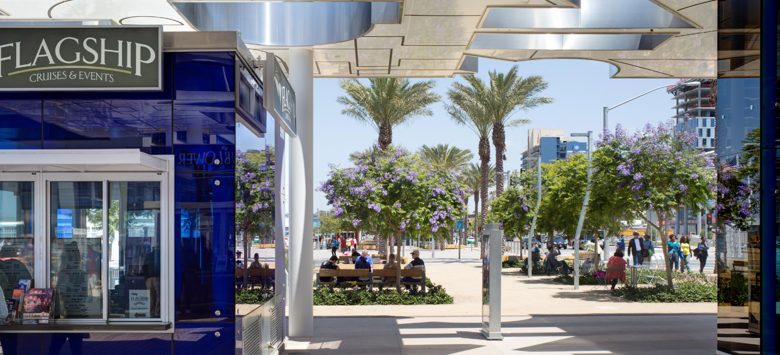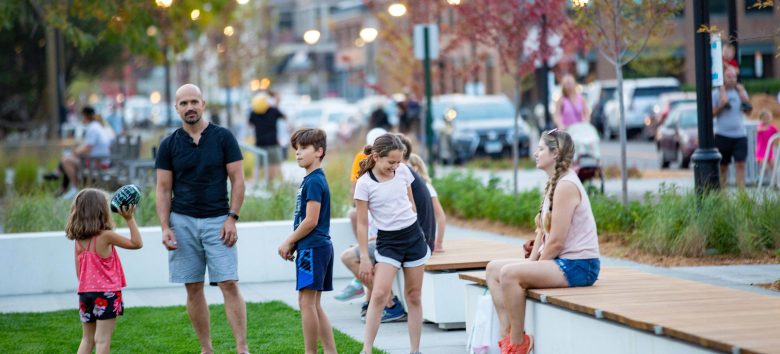
Moving inland, as Northern Colorado’s population has grown, so has congestion along Interstate 25. So, the Colorado Department of Transportation has been investing in improved multimodal infrastructure including the I-25 North Express Lanes project, to support growth, ease congestion and reduce greenhouse gas emissions. In Loveland, a new mobility hub features a bus loading area that operates within the median of I-25, accessed by a pedestrian underpass that connects with a new 200-car parking lot. We worked closely with CDOT to consider the experience of the users who would be walking through the 300-foot underpass tunnel, in addition to the walk from the parking lot to the tunnel entry. Concrete culverts provided the most efficient and cost-effective solution for the tunnel construction, yet would result in an uncomfortable pedestrian experience if left in their raw, original state. Instead, translucent canopies let in natural light, and colorful ceramic steel wall panels and backlit translucent panels in multiple changing color patterns transform the conventional concrete culverts into a high quality transit facility with durable materials, functional design, an infusion of art, and well designed lighting and signage. The mobility hub draws people in and promotes usage of mass transit, and ultimately aligns with long-term transit-oriented development plans for an adjacent innovation district that’s envisioned as a new urban center for the region.
Each of these projects, a commercial port, an industrial lakefront, and a bus terminal, could have been delivered to the public as functional and utilitarian spaces. But with the consideration for placemaking and public space design, the projects are transformative. The investments in infrastructure and the public realm elevate the overall urban experience, making cities more accessible, inclusive, and sustainable. The integration of green infrastructure, smart technologies, and adaptive reuse strategies in urban planning further contributes to the long-term resilience and livability of urban areas, while addressing environmental and social challenges. Ultimately, infrastructure and public realm projects can foster a long-term investment, improving quality of life for residents and visitors alike.






